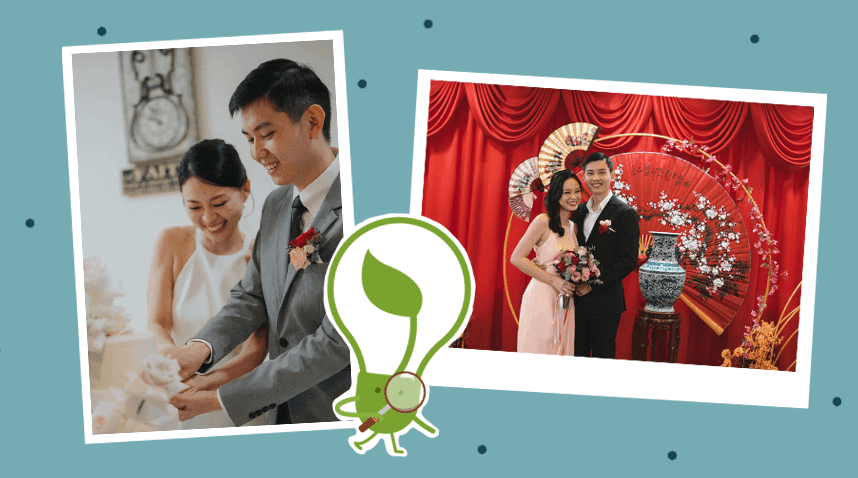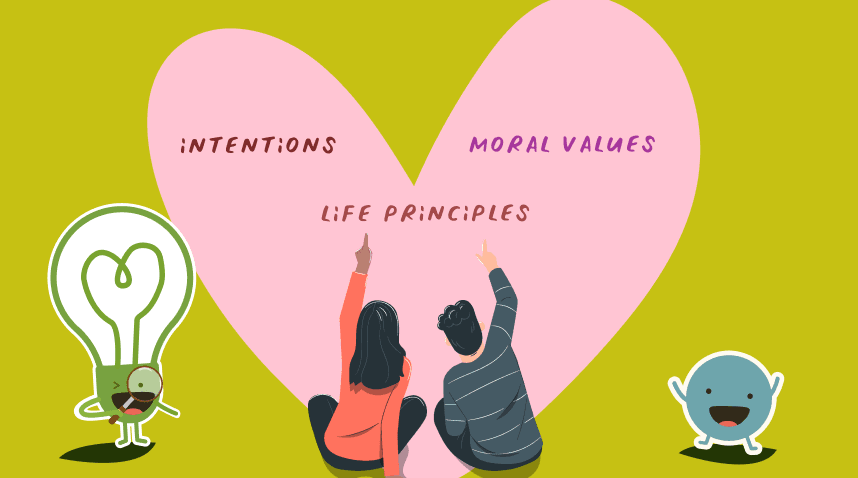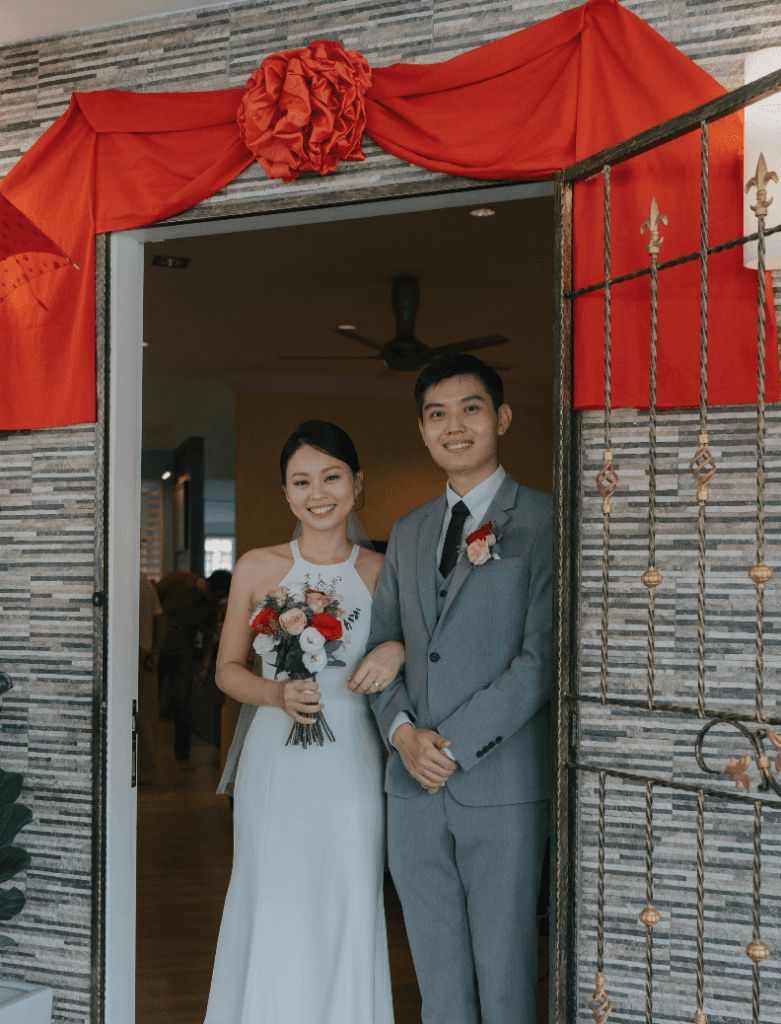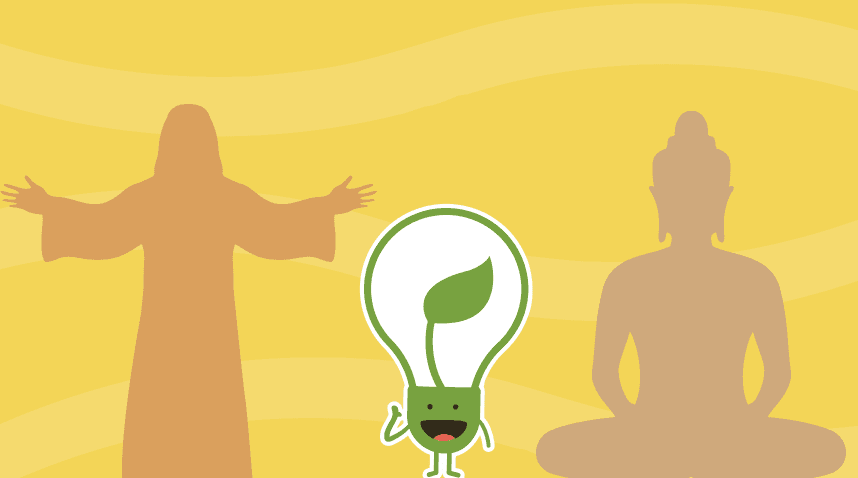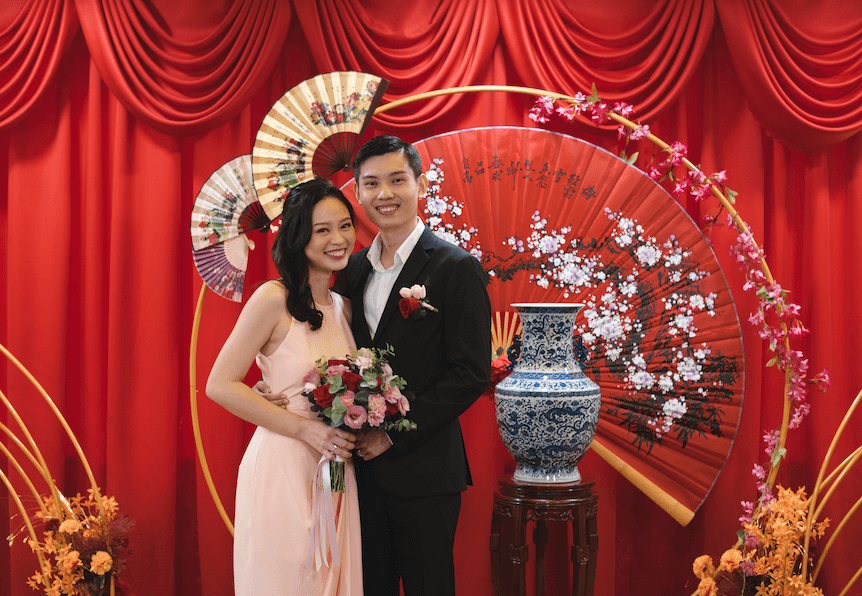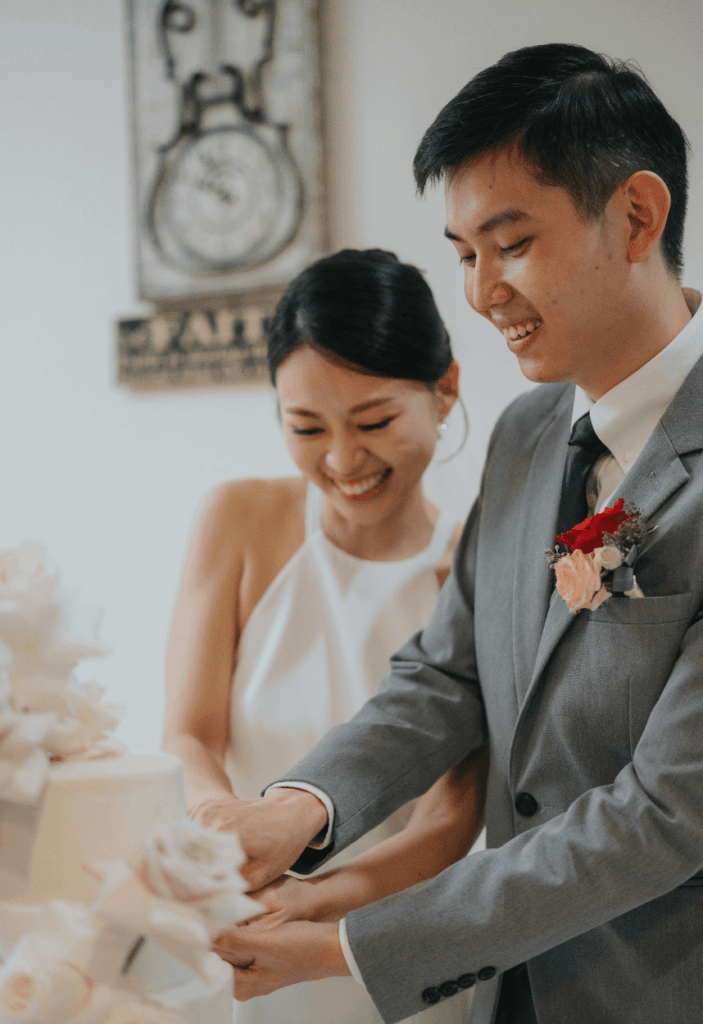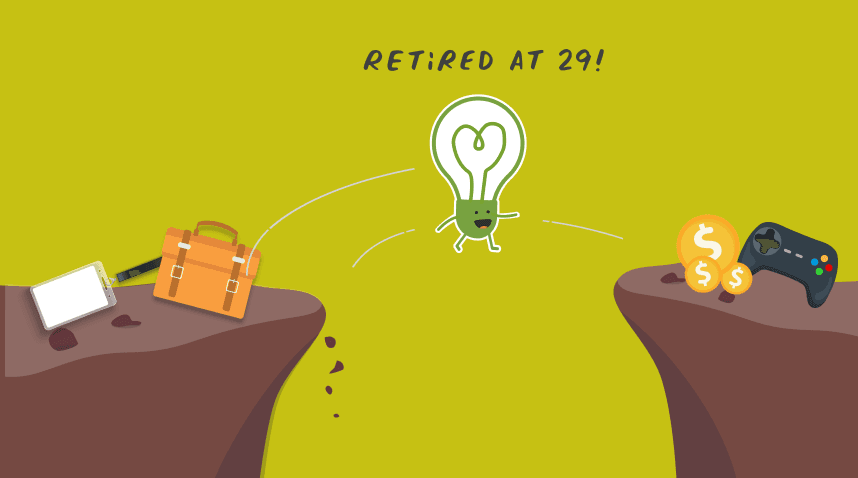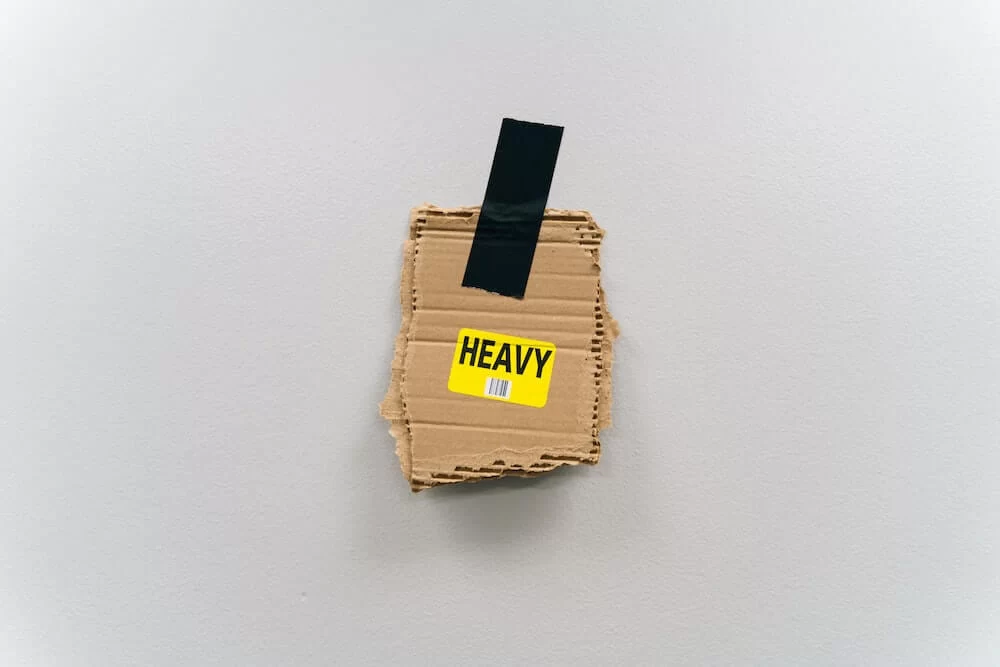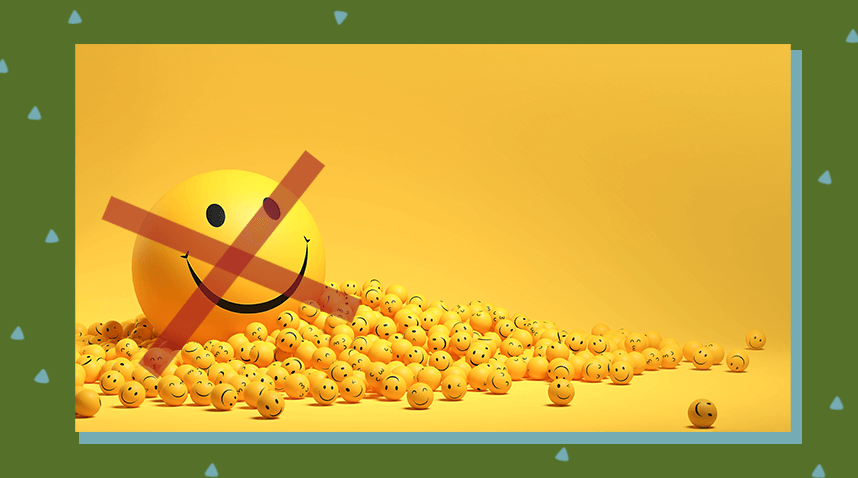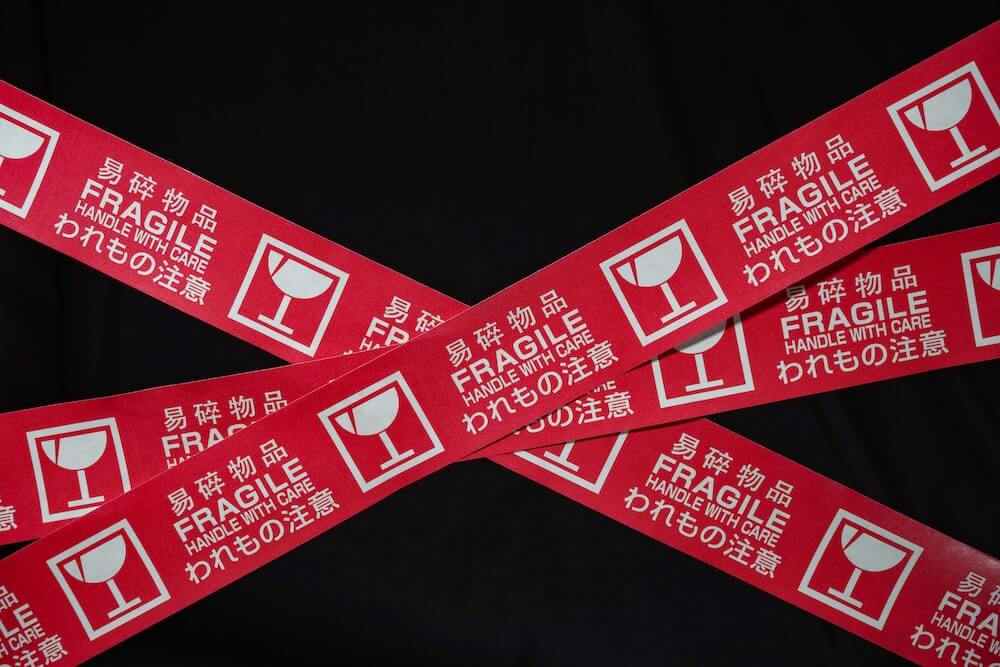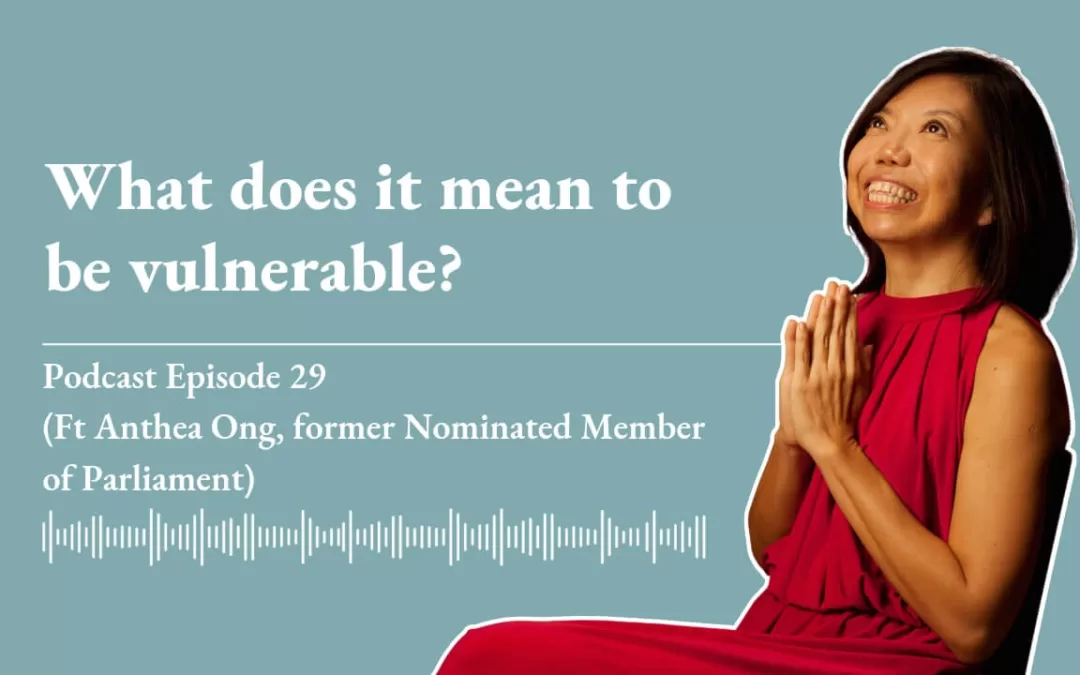
Ep 29: What does it mean to be vulnerable? ft Anthea Ong, former Nominated Member of Parliament (NMP) Singapore
Let us know what you think about this new format. Join the conversation via Telegram.
About Our Guest
Anthea Ong served as a Nominated Member of Parliament from 2018–2020 in the 13th Parliament of Singapore. As a self-described “full-time human being, part-time everything else”, she is a mental health advocate, social entrepreneur and impact investor, life and leadership coach, strategy consultant, yoga and wellness instructor and author, amongst many other roles. She is never seen without headgear to match her multiple hats.
She divides her time, energy and love across many different communities and has founded or co-founded several initiatives in her main focus areas of migrant rights, mental health, environmentalism and social impact, including SG Mental Health Matters, WorkWell Leaders, A Good Space Co-operative, Hush TeaBar and Welcome In My Backyard. She also served and serves on several boards and committees in these fields, including Unifem (now UN Women), Society for WINGS, Daughters of Tomorrow, Social Service Institute, National Volunteer & Philanthropy Centre and the Tripartite Oversight Committee for Workplace Safety & Health. Prior to devoting herself to civil society and social impact work full-time, she spent over 25 years in the corporate world as a C-suite leader. Her new mantra, as a former banker and reformed business leader, is “why start a business when you can start a movement, or two?”
Transcript
[00:00:00] Kai Xin:
Hi, it’s me again, Kai Xin, joined by my cohost Cheryl, and today we have a very special guest, Anthea Ong. So welcome to the Handful Of Leaves podcast where we bring you practical Buddhist wisdom for a happier life.
So today we are gonna talk about a really special topic on vulnerabiliy, and we can’t think of anyone better than Anthea Ong because she has quite a huge track record. At first, she would introduce herself as a full-time human and part-time everything else, which is very humble. I think this entire conversation is gonna help us unveil what the human behind Anthea Ong is because her long track record involves nominated member of Parliament, social entrepreneur, impact investor.
She’s the founder and co-founder of many different companies. One of the really special one, it’s called Hush TeaBar, where she provides space and opportunity for people who are deaf in order to make a living. And a very special concept around how people who are deaf can help to lead silent tea appreciation and tasting. And they are also people who have lived through mental health issues. Perfect for today’s topic on vulnerability. So, Anthea, thank you so much for coming on this show.
[00:01:18] Anthea:
Thank you, Kai Xin.
[00:01:19] Kai Xin:
And being open to share. I think both Cheryl and myself, when we look at your track record, it’s like, you’re so successful. But before we hit record, you were sharing a little bit about the challenges that you’ve been through. I think you can share more with our listeners. It’s so important for us to talk about vulnerability and to also destigmatize it, especially in the Asian context. So really looking forward to this conversation.
[00:01:44] Anthea:
Thank you for having me. I’m looking forward to this chat. Let’s just see how it flows.
[00:01:49] Cheryl:
Amazing. So just to kick things off. Vulnerability is a very big word. Everyone will have different interpretations and different definitions of it. Can you share with us what does the word vulnerability mean to you and how has it evolved?
[00:02:02] Anthea:
I think what comes up for me immediately would be that vulnerability actually means love. Love is not romantic love only. It’s love that comes from within yourself. Therefore, you’re willing to be vulnerable to the other because clearly there is a piece of yourself that you’re putting forward.
Usually, it’s when there is love that you are willing to do that. You’re also willing to do that when the other person has in some way demonstrated or earned even trust, and therefore there’s love there for you to feel safe enough. Kai Xin started this conversation talking about a topic needs to be destigmatized and it’s true.
We think of vulnerability as a lot of things, but one that we clearly associate vulnerability with is pain and suffering. I think it’s true that if you don’t have vulnerability or you don’t wanna show vulnerability, either we are avoiding or not talking about pain or not wanting to bring ourselves forward with the pain we have. But I’m pretty sure that that would mean we’ll also get a lot less love.
And so for me, vulnerability, I think it’s very intertwined with the concept of love. I wanna emphasize again and repeat myself that when I talk about love here, I’m talking about love in the broadest concept. It could be compassion, it is kindness, it is empathy. It is not just romantic love or the kind of love that we feel for family members. I think Sigmund Freud was the one who said something like, we are never so vulnerable as when we love.
I think vulnerability also calls up the emotion and the experience of relief for me. If you are a leader, then vulnerability has in some ways been so associated with weakness. And on the positive side it means that if you’re not vulnerable, you’re strong, you’re resilient, you’re stoic, you have it all together.
And the reason why I say relief is that when I went through my colossal collapse of a broken heart, a broken marriage, a broken business, a broken bank account 17 years ago now along with a lot of pain and suffering, because I was vulnerable, a lot of people come forward to show love for me.
I have to also say that I felt a deep sense of relief that now I don’t have to be seen as this person that is never going to be in a challenging situation or has all the answers. So, I think two big words, love and relief, based on my own experience.
[00:04:59] Cheryl:
Thanks so much for sharing, and I think it’s almost as though vulnerability is the ability to love yourself enough to let love come to you. When you were sharing on that sense of relief that you were experiencing as you allow people to come shower love and you don’t have to feel so alone. I was thinking probably the opposite of vulnerability is a sense of shame. And that’s why when you’re feeling that shame. You’re holding everything in, and then you’re burying yourself under all of that. And the moment when you’re able to let that go and just show the world. I’m imperfect! That’s it! Then, you get that sense of relief.
[00:05:37] Anthea:
It’s relief. It’s liberating. It’s freeing. But most of all, it was very human. I think for the first time in the long time, because of the way my life trajectory was going up to that point of my colossal collapse, it would be seen as almost picture-perfect. It followed a very conventional trajectory of what success looked like. But of course, through that seemingly successful trajectory that was such a Midas touch at every point of my life, there were lots and lots of vulnerabilities. Just that I’d never showed them, because I never felt faith, I never felt like I should because I had a completely different notion of what being human was about. Along the way you held imposter syndrome, particularly as a woman leader in the 90’s. You also held shame when you did not do something well. But all of these are just kind of swept under the carpet and that make you then put on a veneer.
Because there is a public identity that we have to uphold and that really doesn’t allow us to be human. We go around living life feeling rather unsafe, almost as if we are constantly towing because we don’t wanna be vulnerable. We keep towing all the time. It can’t be good for anyone’s mental wellbeing or mental health, but to your point about the opposite of vulnerability, it’s likely shame.
I think absolutely. And actually one of the world’s most well-known vulnerability experts who would also call herself the shame expert is Brené Brown. When I went into the deep dark place 17 years ago, what actually propelled me on this really dangerous very scary downward slippery slope into that deep, deep, dark place was shame.
I actually hid it from family in terms of what was going on with my marriage and all of that for a good year. And that whole year was when things just progressively went down the slippery slope. And I think it’s because of shame that I could not allow myself to be vulnerable, to share, even to my nearest and dearest.
Well, we’re kind of living in a society where blaming and shaming, the cancel culture and all of that. It’s really making it so unsafe to be vulnerable. But yet, if are not vulnerable, then how can we ever really build real connections? How can we truly be human and to truly love and receive love? Therefore, how can we be well? Mentally, emotionally and spiritually.
[00:08:50] Cheryl:
I think the biggest irony that everyone, or at least we humans face, is that our deepest desire is almost to be seen, to connect deeply with another person. But at the same time, we are so afraid to be vulnerable, to do the exact thing that gives us that sense of wellbeing and connection.
[00:09:10] Anthea:
You just said about this paradox, right? We are biologically, emotionally built to wanna connect. But yet in the way we live, especially when we lived intellectually. And allowing ourselves also to just go along in a sort of autopilot mode without that sense of awareness of who we are, what’s around us. We then hold back our vulnerability and our humanness and therefore that actually doesn’t let us connect. And so we are constantly in this tension all the time. And you can understand why there is suffering. There will be suffering until we actually find a way to see this paradox.
[00:10:03] Kai Xin:
That’s so beautiful. And the word that came out is authentic. Like what Cheryl has mentioned, we don’t necessarily have to feel the pressure to be perfect all the time. We don’t have to figure out everything in life. And sometimes that’s okay. We are all work in progress.
I do have this thought about the balance. Because I think a lot of people might associate vulnerability to sharing your fears, your deepest, darkest anxiety, the thoughts, et cetera. But how much is too much and what is considered a safe context and space in order to share that?
The reason why I ask is also because I have my own fair share of going through all these difficult emotions and sometimes it’s quite tempting to indulge in them, which is not healthy. So maybe you can share some experience in terms of how you draw the line.
[00:10:56] Anthea:
It is a great question. But I would say that in terms of my own experience, being vulnerable is not without boundaries, that’s not being vulnerable. That’s just being foolish. In fact, I’ve just had an experience with a teammate who was going through a challenging time and because there was no boundaries and self-restraint – it can become self-centered because you’re downloading on someone else, all of what you’re feeling. This is too much for the other person. Especially when the other person in this case is actually going through so much as well himself. And yet because he was kind and he wanted to be a listening ear, he then lets this completely unrestrained, unfiltered download to happen. And when I heard about it and I had to step in.
I shared very gently that when we are being vulnerable, we also have to be kind and being kind is not just saying, “Hey, I wanna be self-compassionate, and therefore I’m gonna just not stop myself from sharing what I’m going through, just let myself indulge, embrace these emotions.”
But what are you doing with those emotions? Saying you’re being vulnerable, embracing these emotions, but you are actually just projecting and transferring all of that to another person. And so outwardly it might seem like, “Oh, this person is being very vulnerable and sharing all that he’s going through. But if you look at the content of the sharing there’s actually a lot of shadows, projection of his own challenges that he’s not able to deal with.” And that’s giving him a lot of suffering, that he’s then transferring to this other person and actually even making this other person feel terrible about himself, in addition to having to be there to hold the space for the first person.
So I don’t think it’s vulnerability if there’s no boundaries. I don’t think it is vulnerability if you are not continuing to be kind to others and the people around you. I also don’t think it’s very kind to yourself if your vulnerability means you’re just beating yourself up in your own self narrative. I don’t think that’s vulnerability. I think that’s why, for me, vulnerability has to come from a place of love. Otherwise, it’s actually emotional vomiting as well.
[00:13:44] Kai Xin:
Complaining
[00:13:47] Anthea:
You are complaining, you’re whining, you are also self-victimizing. You are getting yourself into a victimized mode to allow yourself to not be confronting what you really need to confront with yourself too. It’s not to say that you can’t feel bad about what you’re going through, but I think it is, “Are you ready (for change)?” Because I think vulnerability is the greatest measure of change. Brene Brown said this about vulnerability as the truest gauge of courage. And so it’s the greatest measure of courage and change.
Being vulnerable is such an opportunity to come so close to yourself and I speak from my experience. If I was not broken into a million pieces 17 years ago, I don’t think I would have confronted and given myself the biggest act of kindness of actually connecting with myself. My truest self and my true nature. The million pieces I thought was me broken became a million pieces, a million seeds of love that I could now spread.
[00:15:11] Kai Xin:
That’s powerful. It almost feels like what you’re saying is to allow your emotions to come up to face them, but it’s also not to indulge them. I mean, in Buddhism we have the 4 Noble Truths, right? So it doesn’t just stop at, okay, there’s suffering and then keep saying, life is terrible, it’s unfair, et cetera.
But what is beyond that?
And I think the first step, of course, it’s not to push away just because the feelings are unpleasant, but to allow yourself to say, Hey, this is difficult, it’s a little bit shitty, et cetera. But also having boundaries.
[00:15:43] Anthea:
You have to see what is. You’ve gotta feel what it is. And that’s suddenly a big part of the Buddhist practice as well. What is the point of awareness? If you don’t go to the next step of knowing why this exists, right?
It’s for you to then put in the effort to move yourself along the path and actually in doing so, you are able to then see what the pain was for. It wasn’t for us to indulge and self victimize. That was not the purpose of the pain.
The pain was for you to see, this is always gonna be part of what life is. I mean, we cannot learn about life and this human experience if we don’t feel life. But then when you feel what life is, what do you do about it? I think this is the part of becoming a better human. And I believe this is also a part of the Dhamma.
[00:16:48] Kai Xin:
Definitely. It’s like a purposeful use of pain or like vulnerability with purpose. Otherwise, it can just spiral into complaining. Actually, I was thinking also about personality. So for me, I’m quite the opposite instead of sharing everything in the open to say, Hey, you know, these are some of the fears, these are what’s bothering me. Because there need to be boundaries, right? So at the back of my head, I would think that I should be kind and compassionate to my friends. They are already dealing with a lot of their own struggles, so I shouldn’t burden them with my own challenges and problems.
So I would suck it in and try to solve them myself, but that’s also not very possible because I need to lean on somebody when my capacity is limited. Do you have advice as to how people of my personality or character can be vulnerable with purpose.
[00:17:39] Anthea:
My goddaughter, she’s 27 and a beautiful, beautiful human being. And that’s exactly what she said. She was sharing a little bit of the challenges she was going through and how she was feeling. And then she said, it’s fine. Compared to so many people, I’m in a so much better position and situation and I certainly don’t wanna download and make them feel even more challenged because I have to share my issues with them.
So this is what I would say: I’ve got so many resources. I’m actually in a very privileged position. So there shouldn’t really be a need for me to either transfer, download, or share this with people around me when they are seemingly in a more challenging set of circumstances.
But, suffering for the person who’s experiencing it is absolute. It’s not relative. It’s only relative when we bring in all of this social conditioning and intellectual abstraction of it all. Then we start to have a comparison and relativity to it. To say that I don’t think I should be sharing because I don’t wanna burden them, especially if they’re also going through challenges themselves. But then we all know that everyone has a story.
Everyone is struggling. First and foremost for me, the suffering of the person experiencing it is absolute to the person and anyone who’s going through suffering deserves compassion, including from ourselves.
And secondly, I don’t think we are allowing ourselves to explore the richness and the depth of our relationships with people around us if we hold back our troubles from them because then they only know you at a certain level. They’ll never know all of you. And even if it comes from a place of kindness or your personality type where you try to keep this to yourself and try to work things through on your own, the other way to reframe it and to look at it is, Hey, do these people mean enough for me to want them to know more of who I am, the layers, the texture, the richness of who I am, which comes from my own experiences. We do think that they mean enough to us that we want to let them in so they know all of us in all our richness as a human.
The other question to ask would also be, Have I given them opportunities to show and demonstrate their love for me? Because if I’m constantly being okay. And this is what was said to me, Kai Xin, when I was going through the colossal collapse, a couple of my friends actually came out to me to say, Oh, now I can finally come forward and say, Hey, this is where I can support you. This is how I can help you.
Because you were always able to solve every problem of yours and on top of everyone else’s problems as well. So there’s just no way in to you so that I feel I have contributed, to having supported you, to being part of your life. In a most authentic, vulnerable, very beautiful, very human way.
So I think that would be the two parts to look at it actually. I hope that was helpful. But that was what happened with me.
Side trivia, I remember there was someone without meaning to, after I shared my story of what happened she said something like, “But Anthea, of course, you’re gonna always be able to come out of it. I’m sure it was painful, but I’m sure you’re gonna come out of it. I mean, look at you, you were a CEO before the collapse. Your family’s very supportive and all of that.”
I had to turn around gently said to her. I thank you for having such an amazing impression of me, (even though she didn’t truly know me, but just cause of my CV maybe), I said, but can I just share with you that I didn’t feel that way? I actually did not think I was gonna come out of it. Because the suffering at that point in time for me was excruciating and was absolute.
“But I must say it was because I was willing to allow myself to be human. That’s one part. Because of that coming out and reaching out for help. That actually allowed me to start to climb out of that deep, dark hole.”
Initially, I felt a bit affronted. What do you mean? I shouldn’t be allowed to feel terrible because of my background?
[00:22:51] Kai Xin:
Or you have to quicken the process and come out faster.
[00:22:56] Anthea:
But your pain cannot be so… because I mean, look at you. What you were before? I think we sometimes forget that. We think that just because you are CEO, you don’t have a dysfunctional family, then whatever life gets at you, you can just sort of shield it off. That’s not what the human experience is.
[00:23:17] Kai Xin:
Even spiritual practitioners. You meditate, you can do it. You feel bad, but I thought you meditate.
[00:23:25] Anthea:
Exactly! Oh, it has happened to me when I do some posting and I talk about, feeling a bit spent, very challenged by this and all of that. And people would be also wondering, well if you do this, you meditate so much, every day for the last 16, 17 years, and you still can’t feel at ease. Then the rest of us have no chance.
And I would always turn around and say that, imagine where I would be if I haven’t meditated. It’s not as if I’m meditating to get some sort of results from it. Not at all, right? I mean, that’s not what it is. Every time I meditate, it’s that moment’s experience rather than think I’m meditating so that I will, I will not (achieve something.) It’s not a means to an end, it’s an end in itself for me. But when I was asked that question, I then said, imagine what could have happened to me. The same thing with, oh, you’re vegan. How come you can get sick? Imagine if I wasn’t taking care of health. So I think, some of these are just very normal because of the social conditioning and certain intellectual ideas we have.
[00:24:40] Cheryl:
I just love the discussion that we were all having just now. It’s like peeling the layers of the onion. At first, we come with, okay, vulnerability is this, vulnerability is that. Now I realize vulnerability is so many things.
Just to summarize, firstly, it’s about understanding that vulnerability is inclusion as well as exclusion. You’re setting the boundaries in terms of what to share, what to not share, and who to share with as well.
And then secondly, vulnerability is not throwing the responsibility to others, but you owning it. But at the same time also allowing yourself to feel the shit that you’re feeling. And the last thing is that, vulnerability as we often forget, could also be a gift to other people, to love us and to let us lean on them as well.
Just to move the conversation forward as well, I’m just curious, how can we help people to feel comfortable in sharing their vulnerable side?
[00:25:34] Anthea:
I think it’s a great question and actually this is a big part of the work that I also do with Hush Tea Bar, but also with Workwell Leaders. How do you create that space? To help people feel comfortable in sharing their vulnerable side, there has to be a safe space. And what do I mean? I mean, a lot of people talk about safe spaces. Actually, the most important descriptor of a safe space is trust.
So first it has to be earned. So that space is not automatic. It has to be earned. And it doesn’t mean that it’s only with friends you have known for a very long time. And when I say earn, I mean that if we truly wanna hold a space of trust for another to share, then I think it’s really important for us to not expect them to be vulnerable with us if we are ourselves not vulnerable.
So I feel like to create and to earn that trust, it’s so important for us to disarm ourselves first. So that another person, as you talked about Cheryl, how do we help people feel more comfortable? How do we go to all the communities, all the spaces we are in, all the relationships we have. What do we do to help people around us feel comfortable to share their vulnerability. It’s not about what we can give to them, but it’s how do you show up? Do you show up armed? Because if you show up armed emotionally, then it’s very difficult. You have not earned the trust of the other to be vulnerable.
And this is especially important for leaders, which is the work at Workwell Leaders. It is to bring together CEO’s of largest employers in Singapore together to look at how do we become more human-centered leaders. And to do that, especially when it comes to championing mental wellbeing at the workplace. You have to walk the talk first as a leader, you cannot just say, Hey, just talk, tell me what’s going on. If you have not created a space of safety and trust because you haven’t even put yourself forward yet. You haven’t given a piece of yourself in this space yet. The moment a leader can be vulnerable, to say that, Hey you know, I just went through a really difficult challenge, I needed help, and all of that, even just something like that would already change the energy and the kind of narrative within the workplace or the team.
I don’t have to feel ashamed that I’m feeling so down because my grandma just passed on, right? Because my C.E.O. Just talked about how he lost his loved one, and he’s also struggled. I think that’s really important. I mean, Gandhi said this, right? We have to be the change we want to see in the world. We can’t just go and tell people, Hey, be vulnerable, tell me. But it’s not gonna work. What are you bringing to the space? And so I think this is really important. We have to earn their trust so they can be vulnerable. That goes to the same thing, right?
Don’t just share with everyone. There’s also a need to say, is this a safe space for me to be vulnerable too? And we often say that it’s not vulnerability if you don’t have boundaries. Those boundaries very often is along the values of trust and respect. And empathy and compassion. And if you feel that, then I think you are more likely to feel comfortable with being vulnerable to your question.
[00:29:18] Cheryl:
But also at the same time, I feel that it can be quite challenging to be vulnerable in the corporate setting because you don’t know what this information that you are divulging might be perceived.
[00:29:53] Anthea:
And the reason I initiated Workwell Leaders back in May, 2018 is that it then has to come from the top right, unless you have a cultural shift. Unless it’s a workplace culture that from the very top is encouraging this kind of conversations to be had. And because it’s actually directly gonna be affecting business outcomes and business performance. It’s directly gonna affect the employee’s mental health.
If we don’t have this kind of conversations, we don’t have this kind of culture that we built that’s inclusive, that is creating psychological safety, at some point, entire world economy is gonna hit the ground. Even with the whole AI thing, we’re not gonna be able to survive because the culture has become so toxic that you are just constantly just dealing with all of this. I don’t wanna say what I wanna say. Therefore, there’s no creativity or innovation and no new ideas.
You feel like if you say this, you don’t get promoted. Then that’s silly because then you might leave and then the company is actually losing good talent. So all around it’s just not a very smart thing to do, that we continue to sweep these conversations under the carpet or saying that in the corporate world, this is really not the place. But it’s not easy for employees to just say, Hey, I wanna talk about this. It needs to come the top to say that this is the safe place and then it has to be demonstrated. They must walk the talk. It must go all the way down to team managers to say that, Hey, you must intentionally create spaces for this kind of conversations. Make sure you talk with your team members and ask, how are they doing? Hey, I understand you just lost a family member. How are you doing? Is there anything I can support with? So, it’s very hard from the ground up to change the culture.
When you don’t have the power, of course you’re always gonna not risk it. At the same time, I must say though, Cheryl, that it’s important to also bring the awareness into your workplace, right? And so the practice of mindfulness is helpful to let you know that, I am aware that this person I can share with, this team manager I can share with, right?
So there’s also the need to be looking at context, people and not just say, oh, as long as it’s the workplace, I’m not sharing anything, it’s also not gonna be helpful because then you are not also living intentionally. It needs to be a cultural change. It’s also why with Hush Tea Bar, when we bring the experience into workplaces, cause we are a mobile tea bar.
The idea is that then we will create that space amongst all of the colleagues, including their bosses and their managers, come together to go through a silent experience, get them to learn how to sign emotions. To acknowledge emotions have a place. And emotions include negative emotions that we get them to sign, and then they have to go back and sign with each other. And then they go through the silent experience, and then they actually share. Going back to what Kai Xin said, then there’s the authentic conversations that you have as humans and not just as colleagues. After such a profound experience. The workplace is always gonna be a bit more challenging for sure.
[00:33:40] Cheryl:
And thanks for giving us hope that as long as we still look for the people who we can feel safe, we still can embody that side of vulnerability. And I think little seeds, that we plant can hopefully create a ripple of change.
[00:33:56] Anthea:
Yes, absolutely. Also, rest in the hope that there’s a lot of effort to try to make this change happen at workplaces from the top. Workwell Leaders is not the only one, but because we are targeting the CEO’s at the very, very top. But there are also many efforts trying to look into how HR policies can change how team management practices should embrace diversity and inclusion and stuff like that. And you are right Cheryl, it’s just different seeds that we plant with what we have, where we can. Never lose hope.
[00:34:34] Kai Xin:
Perhaps, beyond just getting the leaders to set the tone, employees also have control in terms of asking their bosses how they are and making the effort to see their bosses beyond just performance and how they show up at work. One specific incident, which touched me very much. One of my colleague, usually we do quarterly reviews and I would ask what else can I do to support you in both your personal life as well as at work?
And then we went off the conversation. And then, the colleague asked. Boss, you always ask how you can support us, but how can we support you? I mean, even as I’m saying this right now. I feel so teary-eyed. Finally, people actually do see the human side and they care.
It’s kind of linking back to how we started a conversation about being vulnerable, sharing openly with love. I think it goes both ways. So if the employee can also disarm themselves a little bit, but of course with boundaries and lean in with curiosity, then the connection can happen.
[00:35:41] Anthea:
That is so beautifully said. I’ve had those experiences too. Many a time. And I join you in being teary-eyed when this happens. But it also speaks volume of how often we also think of our leaders and our bosses as superhumans. But actually they’re just humans, like all of us. And especially through COVID everyone goes to them, right? The workers go to them, they ask them how to deal with all of these challenges. The suppliers, the clients. And so in fact, studies are showing that there’s a significant level of burnout at the leaders’ level.
If we are always anchoring ourselves in love and compassion, then it’s never about how change should be made for me, but I should be part of that change as well. And if all of us think about it that way, then there’s no reason we shouldn’t show up with compassion for people who traditionally, we think they will always be fine. I mean, like the story I said about earlier, right? I think all we’re saying is, bring our humanness to every relationship, every space that we are in, because at work it’s actually a collective of humans coming together, right?
So that shouldn’t be any different to any community that we’re in. And if we can change the way we see workplaces where most of us spend most of our waking hours, it’s gonna have such a direct impact on who we are in our family and community lives as well.
[00:37:27] Cheryl:
That’s so beautiful. Thanks for sharing, Kai Xin. And thanks Anthea, for chiming in. Really helped me change my perspective as well. Because I guess I always feel intimidated if they’re the Senior Director or Senior VP or whoever, and I forget to see their humanness behind their titles, and their roles and all that.
[00:37:50] Kai Xin:
Cool. So we’ve chatted a lot, I wish we could go on, but if we were to wrap up this episode and chat, I have a question for you because you have two books actually. One is “50 Shades of Love”, and another one.
[00:38:06] Anthea:
It’s “The Nominated Member of Parliament Scheme: Are Unelected Voices Still Necessary in Parliament?”
[00:38:15] Kai Xin:
And if you were to write a new book, hypothetically, on vulnerability, what would the title of the book be?
[00:38:24] Anthea:
It’s a good question. I sort of feel though Kai Xin and Cheryl, that “50 Shades of Love”, it’s so much about my vulnerability because I shared so much of when I was the most challenged in so many of the shades, the chapters. This is a great question. So if you’ll indulge me, I think one would be “Lost and Found”.
I was certainly in some way lost in the social conditioning of that trajectory I talked about. But also I was suddenly very lost when I was dealing with the collapse in the first instance. I felt lost because, who am I now if I’m not a C.E.O., I’m not a wife. And interestingly, my vulnerabilities across the decades of my life, especially the last colossal collapse has allowed me to find my “why”. Who I’m not and who I am or what I am? It’s not about the public identity anymore, but just allowing me to go back to, that I am a human being above everything else. So that’s one that just came up. I have always been very taken. I don’t know whether you both know about the Japanese art of Kintsugi.
[00:39:49] Cheryl:
Kintsugi.
[00:39:51] Anthea:
And I actually have a cup behind, which is a Hush tea cup that was broken, and then it’s patched obviously with the golden thread, and the golden paint. That image has always been one that I associated a lot of what I went through. And now I feel like my heart is definitely scarred. But now it’s enriched because of the scarring, which is vulnerability with so much more light and awareness and love.
I don’t know what I would call it. Maybe “My Kintsugi Journey” or something, “My Kintsugi Life”. The last one I’d like to bring up, because I know your project, it’s called a Handful of Leaves. What just came up to me is, we talked about vulnerability as being so important in that connection that we long for as human beings. So maybe it could be saying that I’m giving a hand of connection, I talked about my vulnerabilities.
And that I think can only come in the truest way and the most authentic way if we are actually able to sort of feel safe, included, belong enough to want to share our vulnerabilities and then therefore get the connections that come with it.
[00:41:15] Kai Xin:
Beautiful way to wrap up the episode. So we have three book titles in the making. Yes. And thank you so much Anthea for this chat. I’ve learnt so much from you. So I think at the end of the day, it’s really about being true to oneself, having love, and it goes both ways. And to all our listeners, hopefully you can take this all in and learn to be a little bit stronger by showing your vulnerability. Until we meet again the next episode, may you stay happy and wise. Thank you so much, Anthea.
[00:41:48] Anthea:
Thank you.
Resources:
Hush TeaBar – HUSH started in 2014 as a volunteer-run groundup initiative before becoming a social enterprise in 2016 where we have mostly given employment and empowerment opportunities to Deaf persons and Hearing persons in recovery from mental health conditions.
Special thanks to our sponsors:
Buddhist Youth Network, Lim Soon Kiat, Alvin Chan, Tan Key Seng, Soh Hwee Hoon, Geraldine Tay, Venerable You Guang, Wilson Ng, Diga, Joyce, Tan Jia Yee, Joanne, Suñña, Shuo Mei, Arif, Bernice, Wee Teck, Andrew Yam, Kan Rong Hui, Wei Li Quek, Shirley Shen, Ezra, Joanne Chan, Hsien Li Siaw, Gillian Ang
Editor and transcriber of this episode: Tee Ke Hui, Cheryl Cheah, Koh Kai Xin

